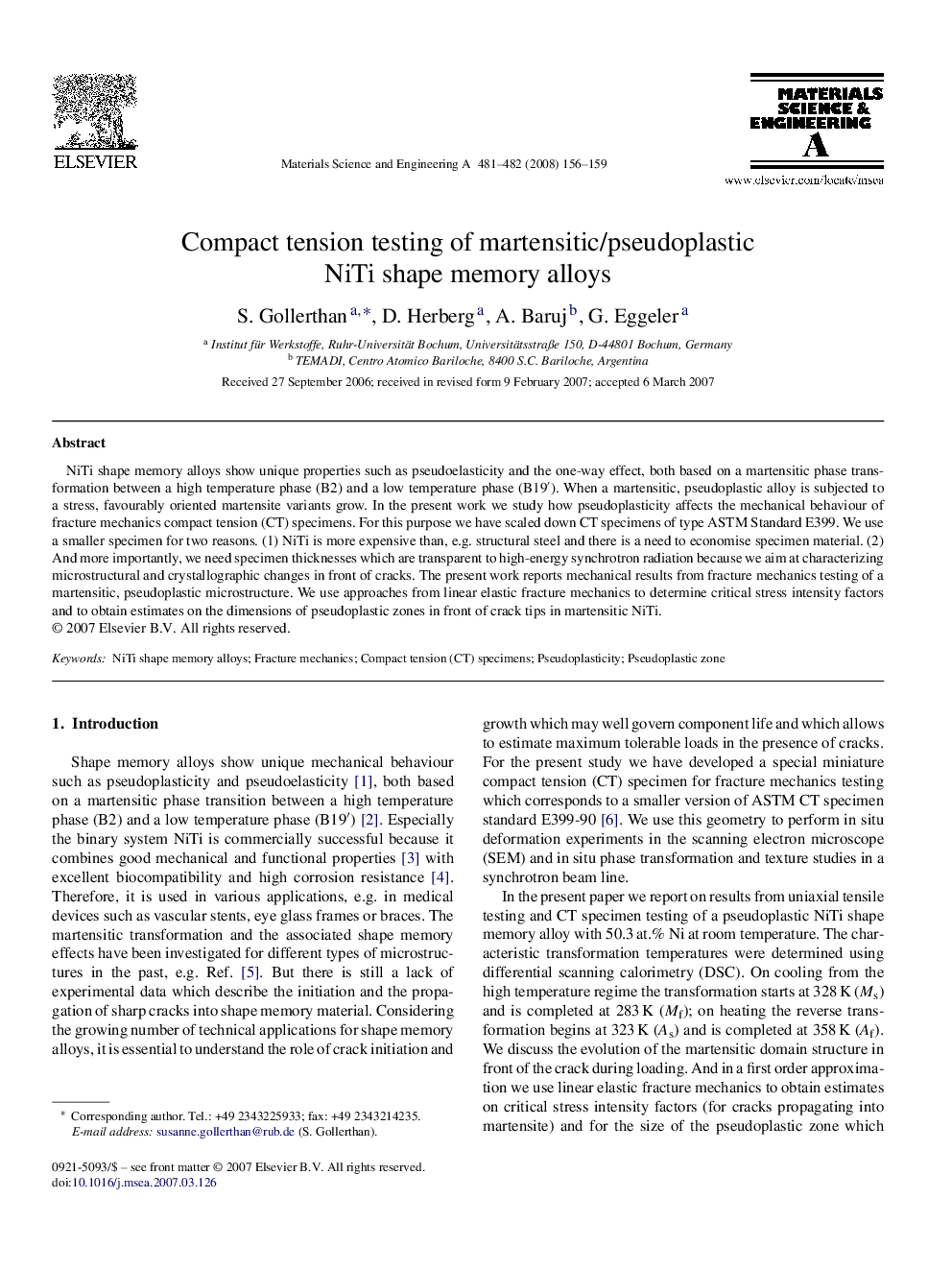| Article ID | Journal | Published Year | Pages | File Type |
|---|---|---|---|---|
| 1582460 | Materials Science and Engineering: A | 2008 | 4 Pages |
NiTi shape memory alloys show unique properties such as pseudoelasticity and the one-way effect, both based on a martensitic phase transformation between a high temperature phase (B2) and a low temperature phase (B19′). When a martensitic, pseudoplastic alloy is subjected to a stress, favourably oriented martensite variants grow. In the present work we study how pseudoplasticity affects the mechanical behaviour of fracture mechanics compact tension (CT) specimens. For this purpose we have scaled down CT specimens of type ASTM Standard E399. We use a smaller specimen for two reasons. (1) NiTi is more expensive than, e.g. structural steel and there is a need to economise specimen material. (2) And more importantly, we need specimen thicknesses which are transparent to high-energy synchrotron radiation because we aim at characterizing microstructural and crystallographic changes in front of cracks. The present work reports mechanical results from fracture mechanics testing of a martensitic, pseudoplastic microstructure. We use approaches from linear elastic fracture mechanics to determine critical stress intensity factors and to obtain estimates on the dimensions of pseudoplastic zones in front of crack tips in martensitic NiTi.
